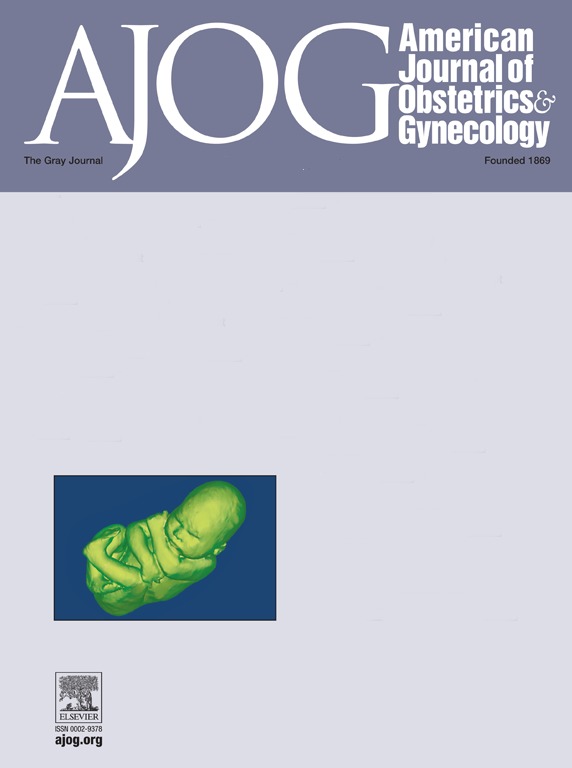Outcome of supra-cervical compared to total hysterectomy for emergency peri-partum hemorrhage: a systematic review and meta-analysis.
IF 8.4
1区 医学
Q1 OBSTETRICS & GYNECOLOGY
引用次数: 0
Abstract
OBJECTIVES To report the outcome of patients undergoing supracervical (SCAH) compared to total (TAH) abdominal emergency peripartum hysterectomy (EPH) for postpartum hemorrhage (PPH). DATA SOURCES A systematic search was conducted in Medline, Embase, and Cochrane Library from January 2000 to December 2024, using MeSH terms and keywords related to peripartum hysterectomy and maternal outcomes. STUDY ELIGIBILITY CRITERIA STUDY DESIGN: Observational cohort and case-control studies. POPULATION Patients undergoing emergency SCAH vs. TAH for PPH within 24 hours of delivery. EXCLUSION CRITERIA Studies exclusively reporting cases with placenta accreta spectrum (PAS), case reports, conference abstracts, and studies with <10 cases per arm. STUDY APPRAISAL AND SYNTHESIS METHODS Two independent reviewers screened studies, extracted data, and assessed quality using the Newcastle-Ottawa Scale (NOS). Head-to-head meta-analyses were conducted using random-effects models. Heterogeneity (I2) and publication bias were assessed. RESULTS 25 studies were included, analyzing 1,478 patients (715 SCAH, 763 TAH). No significant differences were found in maternal mortality (p=0.532), ICU admission (p=0.415), reoperation (p=0.884), or major complications (p>0.05). SCAH was associated with: Lower risk of ureteric injuries (OR: 0.38, 95% CI 0.18-0.77; p=0.007). Reduced estimated blood loss (EBL) (MD: -446.03 mL, 95% CI -747.72 to -144.35; p=0.004). Fewer blood transfusions (MD: -1.46 units, 95% CI -2.37 to -1.14; p=0.002). Shorter operative time (MD: -53.22 min, 95% CI -86.48 to -19.95; p=0.002) CONCLUSION: SCAH appears to offer advantages over TAH in emergency PPH cases, particularly in reducing ureteric injuries, operative time, and blood loss. However, heterogeneity and lack of standardized PAS diagnosis criteria limit the generalizability of findings. Future research with standardized protocols is required to refine surgical decision-making.急诊围产期出血行宫颈上切除术与全子宫切除术的疗效比较:一项系统回顾和荟萃分析。
目的比较经宫颈上(SCAH)和全腹(TAH)围生期急诊子宫切除术(EPH)治疗产后出血(PPH)患者的预后。资料来源系统检索2000年1月至2024年12月在Medline、Embase和Cochrane Library中检索与围产期子宫切除术和产妇结局相关的MeSH术语和关键词。研究设计:观察性队列研究和病例对照研究。人群:分娩24小时内发生紧急SCAH与TAH的PPH患者。排除标准:专门报道胎盘增生谱(PAS)病例的研究、病例报告、会议摘要和研究(0.05)。SCAH与输尿管损伤风险降低相关(OR: 0.38, 95% CI 0.18-0.77; p=0.007)。减少估计失血量(EBL) (MD: -446.03 mL, 95% CI -747.72至-144.35;p=0.004)。输血减少(MD: -1.46单位,95% CI -2.37 ~ -1.14; p=0.002)。更短的手术时间(MD: -53.22 min, 95% CI: -86.48 ~ -19.95; p=0.002)结论:在急诊PPH病例中,SCAH似乎比TAH更具优势,特别是在减少输尿管损伤、手术时间和失血方面。然而,异质性和缺乏标准化的PAS诊断标准限制了结果的普遍性。未来的研究需要标准化的方案来完善手术决策。
本文章由计算机程序翻译,如有差异,请以英文原文为准。
求助全文
约1分钟内获得全文
求助全文
来源期刊
CiteScore
15.90
自引率
7.10%
发文量
2237
审稿时长
47 days
期刊介绍:
The American Journal of Obstetrics and Gynecology, known as "The Gray Journal," covers the entire spectrum of Obstetrics and Gynecology. It aims to publish original research (clinical and translational), reviews, opinions, video clips, podcasts, and interviews that contribute to understanding health and disease and have the potential to impact the practice of women's healthcare.
Focus Areas:
Diagnosis, Treatment, Prediction, and Prevention: The journal focuses on research related to the diagnosis, treatment, prediction, and prevention of obstetrical and gynecological disorders.
Biology of Reproduction: AJOG publishes work on the biology of reproduction, including studies on reproductive physiology and mechanisms of obstetrical and gynecological diseases.
Content Types:
Original Research: Clinical and translational research articles.
Reviews: Comprehensive reviews providing insights into various aspects of obstetrics and gynecology.
Opinions: Perspectives and opinions on important topics in the field.
Multimedia Content: Video clips, podcasts, and interviews.
Peer Review Process:
All submissions undergo a rigorous peer review process to ensure quality and relevance to the field of obstetrics and gynecology.

 求助内容:
求助内容: 应助结果提醒方式:
应助结果提醒方式:


